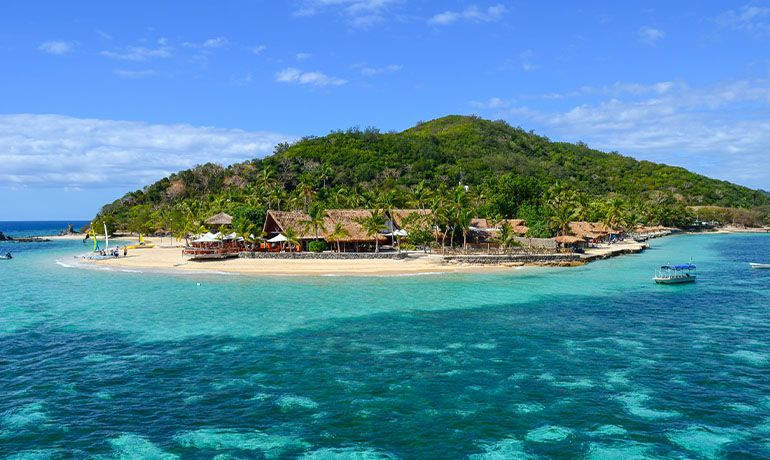Bula! This local salutation is likely the first thing you hear once you touch down in the island paradise known as Fiji. Plan a getaway to this South Pacific destination where you’ll be immersed in the island’s natural beauty and pulsating culture, and learn the true meaning of what it means to be on ‘Fiji Time.’
If Fiji is on the top of your bucket list, you’re likely wondering when is the best time to visit. Find out what to expect when visiting Fiji during the dry vs. wet season, activities to add to your itinerary, and how to make your dream Fiji vacation become a reality.
Table of Contents
When Is The Best Time To Visit Fiji?
Fiji is characterized by two seasons, dry season and wet season. Fiji has thriving tourism all year round. However, some times of year are better to visit than others if you want to maximize your time between its islands.
The best time to visit Fiji is during the dry season. The dry season lasts from May to September. These months have the ideal weather of clear, sunny skies, warm temperatures, and little rainfall, making it feel like paradise.
The dry season spans across the fall and winter in Fiji. If you’re looking for a more laid-back travel experience to indulge in ‘Fiji Time,’ it’s recommended to visit in the fall shoulder months when there are fewer crowds. However, since the weather is still transitioning, there can still be days of rain or high humidity. If crowds aren’t a concern and instead you want to experience the best Fiji weather, the winter season is the best travel time.
Some travelers may prefer to visit Fiji during the wet season. The only downside to the wet season is the chance of rainstorms, which occur daily but are short-lasted. Spring falls within the wet season but features many popular festivals.
When Is The Worst Time To Visit Fiji?
When most people think about Fiji, they imagine the idyllic island weather with clear waters and skies while lounging all day on the beach or enjoying cultural activities with the local Melanesian peoples. And while this sounds like paradise, Fiji isn’t like this all year long. There are times of the year when many people avoid traveling to the island due to the change in weather patterns that can affect your trip itinerary.
The worst time to visit Fiji is during the rainy season, from October to April. The wet season typically has heavy rain showers every day during the afternoon. Along with the rain, the waters have less visibility for popular activities like snorkeling. Although a rare occurrence, Fiji experiences cyclones. December is the worst month to visit Fiji because it has the highest chance of cyclones hitting the island.
Since the rain is brief, some travelers prefer to visit Fiji during the wet season. Fiji’s busiest travel season during the dry winter can be unfavorable for travelers looking to avoid big crowds at the resorts or on the beaches.
Visiting Fiji In The Spring
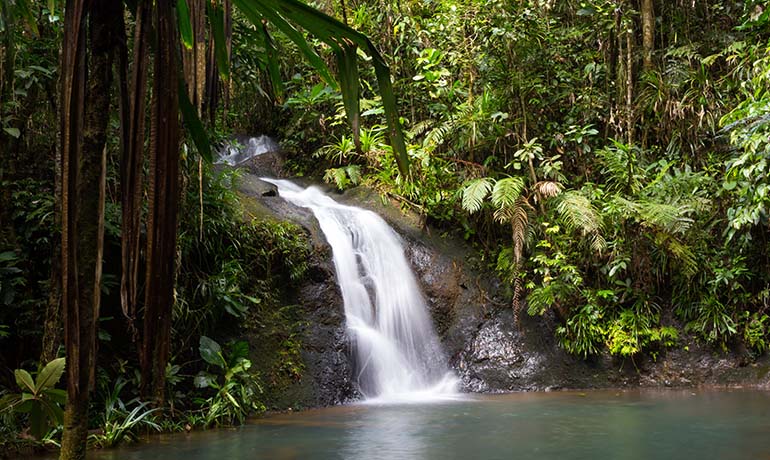
Spring in the southern hemisphere occurs during the months of October to December. These months fall within Fiji’s wet season. The most noticeable characteristic of these months is the daily rain showers across the islands. However, it can still be a great time to visit and enjoy one of the most festive times of the year.
With spring following the cooler winter months, visitors can expect temperatures to rise and the days to get longer. Spring typically has average temperatures in the low-mid 80s and low temperatures in the 70s.
The wet season creates daily rainstorms during the afternoons in Fiji. These showers typically only last for an hour before returning to the normal sunny days. If you have activities planned during the day, be sure to account for the brief change in weather. However, it usually won’t alter plans too much!
Tourism in Fiji begins to slow during the spring. Up until mid-October is the high season. It’s a great time to experience the true ‘Fiji Time’ and participate in the numerous countrywide celebrations. Spring is a popular time for events, including the Diwali Festival of Lights and Fiji Day in October or the month-long holiday and New Year celebrations in December.
Visiting Fiji In The Summer
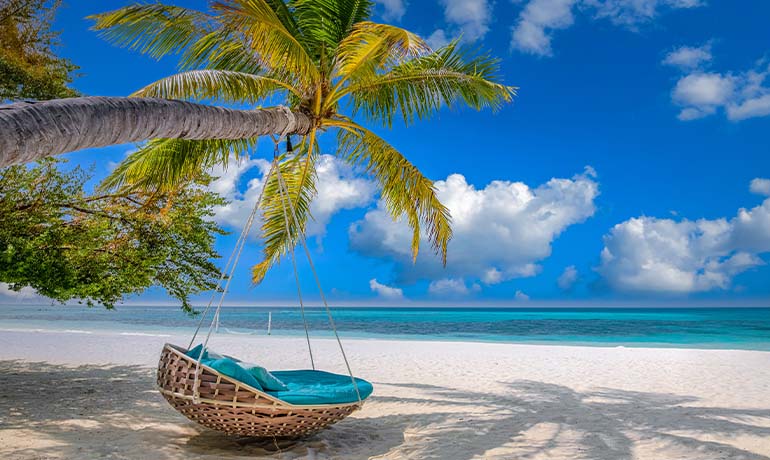
Summer in Fiji occurs in the middle of the wet season. The summer months of January to March receive the most rainfall. These heavy tropical storms increase the chance of cyclones, although they don’t happen often.
Fiji’s summers are a mix of the hottest and wettest times of the year. Temperatures can reach over 90 °F during the day and remain in the 80s at night. January is the hottest month in Fiji. The daily rain showers significantly increase the humidity, so days can feel even warmer.
Summer is the low season for travel since most travelers prefer other favorable weather conditions during their trip. If you’re visiting during these months, there are a few benefits. Summer has the longest days out of the year, with over 13 hours of sunlight. Also, it’s a great time to visit the many waterfalls in Fiji to see them flowing at their maximum capacity.
The top of the year experiences many local religious Hindu festivals, most notably the color-filled Holi Festival.
Visiting Fiji In The Fall
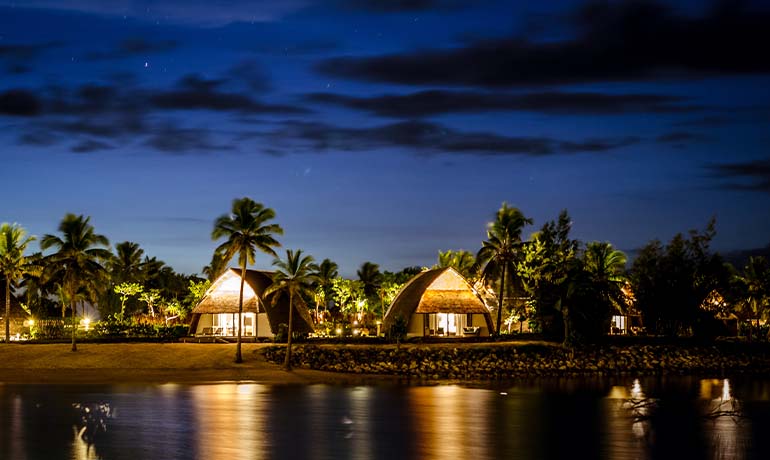
Fall is one of the transitional months in Fiji, where it shifts from the hot, wet summer to the cool, dry winter. These shoulder months of April to June are some of the best times to visit Fiji. You’ll benefit from the changing weather to favorable conditions while avoiding the tourist crowds that arrive during the latter months.
The wet season ends in April, so you’ll start to see a dramatic change in the weather during this month. Temperatures drop below the 90-degree heatwaves in March, and the daily rainstorms begin to settle. However, visiting in April can still have weather similar to winter if visiting earlier in the month.
May is one of the best times to visit Fiji. The weather resembles the islands’ summer temperatures, and it occurs just before the peak season. June, the end of the fall, is the start of peak travel season.
Travelers looking to enjoy outdoor activities in Fiji should consider visiting during the fall. The long days give plenty of time to spend outdoors with an average of 10-11 hours of daylight. In addition, it’s a popular time for music festivals, such as the International Jazz and Blues Festival in May and the World Music Festival in June.
Visiting Fiji In The Winter
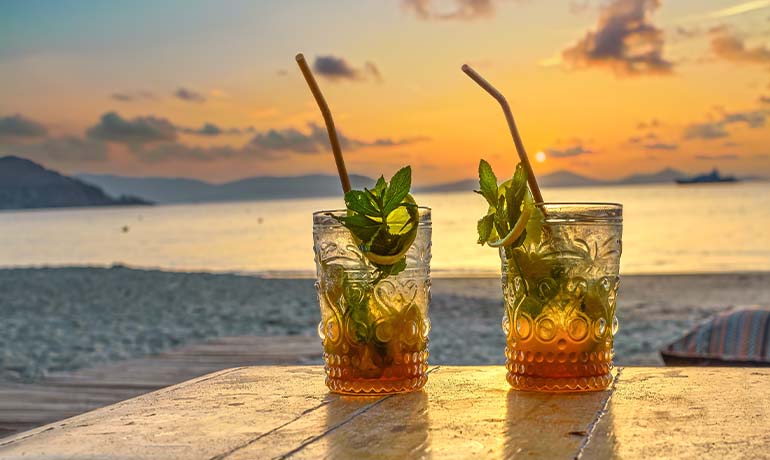
Winter in Fiji is unlike what most people think about. Because for this island chain, it’s the time of year when it experiences the best weather and, as a result, is the most popular time to visit. Since Fiji is in the southern hemisphere, winter occurs from July to September.
The peak season in Fiji is during the winter, when it receives most of its international visitors. It coincides with the holiday travel season for many Australians and New Zealanders, amongst many other international visitors.
The dry season is in full effect during the Fiji winter. You can expect clear skies and comfortable temperatures in the mid-80s during the day and the high 60s at night. In addition, it has little rainfall and humidity. Thanks to the weather conditions, it’s the ideal time to enjoy outdoor activities like snorkeling, hiking, or daytime excursions without the threat of a mid-day rainstorm. In summer, you can also enjoy the famous week-long Bula Festival happening in July or August every year and the Fiji Regatta Week in September.
With its perfect tropical climate, Fiji because very busy in the winter. Its resorts, tours, private islands, and other activities are frequently booked. We assist our Marchay Members in preparing for their trip to ensure they fill their itineraries with the experiences they’re hoping for.
Attractions & Things To Do In Fiji
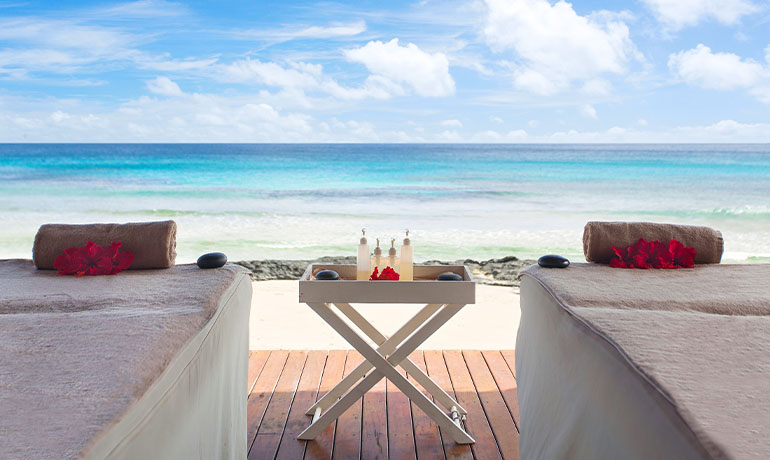
#1. Trek Through Sigatoka Sand Dunes National Park
The Sigatoka san Dunes National Park is one of the smallest in the world but home to some of Fiji’s largest dunes. Hiking trails along these coastal dune landscapes rise to 60-meters tall, providing views overlooking the Viti Levu Island coast.
#2. Participate In A Kava Ceremony
Visit Turtle Island to immerse in one of the most famous local traditions — the Kava Ceremony. Kava is a traditional Fijian dish made from the yaqona root. Watch as the locals grind the root into a communal bowl which is then passed around for everyone to take a drink. Its mild sedative effects make you feel relaxed and truly settle into Fiji Time.
#3. Catch A Big Wave At Cloudbreak
Seasons surfers flock to Fiji every year during the fall and winter months to put their skills to the test at Cloudbreak. This world-famous surf spot has some of the most consistent waves that reach heights of 25-ft and beyond.
#4. Iguana Spotting At Kula Wild Adventure Park
Families will have hours of fun in Fiji’s Kula Wild Adventure Park in Viti Levu. Stroll the pathways between the zip-ling course and water park. Keep your eyes out for crested iguanas walking the same paths that are friendly enough to hold.
#5 Explore The Great Astrolabe Reef
Climb into your wet suit and put on your flippers to explore offshore Kadavu Island in the Great Astrolabe Reef. It’s one of the best places for diving in Fiji, where you’ll swim alongside marlin, sharks, giant trevally, and more.
#6. Scuba Diving in Beqa Lagoon
Fall and winter are the best seasons to explore the coral coast of the Island of Beqa, one of the largest barrier reefs in the world. Scuba dive offshore to swim among the vibrant marine life like reef sharks, explore underwater shipwrecks, and see why it’s nicknamed the ‘Soft Coral Capital of the World.’
#7. Swim With Manta Rays
Dive beneath the surface in the Nanuya Balavu and Naviti Island channels to witness the majestic Manta Rays seemingly ‘fly’ through the water while flapping wings spanning up to six meters wide!
#8. Zipline Through Fijian Canopies
Reach top speeds while zipping over Fiji’s lush jungles in the Sabeto Valley with Sleeping Giant Zip Line. You’ll glide between bases while enjoying views of the verdant landscapes just outside of Nadi, the largest island.
#9. Explore The Oho Caves
Take a Tao Village Tour where local guides take you on a walk through time into the Oho Caves, where their ancestors lived more than 4,000 years ago.
#10. Visit A Traditional Salt Factory
The locals at Vusama Village invite visitors to see firsthand how they produce salt. Tours of their traditional salt factory reveal behind the scenes how salt gets cultivated, harvested, and processed for enjoying in popular dishes like the Kokoda.
#11. Stroll Through The Garden Of The Sleeping Giant
Colorful flowers bloom across the 20 hectares of the Garden of the Sleeping Giant during the island’s wet season. Travel to the Nausori Highlands to see more than 2,000 species of orchids and other native Fiji plants.
#12. Jet Boat Safari Through Sigatoka River
Immerse yourself in Fiji’s history as an expert guide narrates the journey down the Sigatoka River. The award-winning tour lasts a half-day where you’ll cross the coastal town of Sigatoka and navigate with stops at other riverside Fijian Villages, which also use the river as a major transportation system.
#13. Rafting Through The Upper Navua River
Splash your way through the choppy waters of the Upper Navua River as you paddle your way through the Upper Navua Gorge. The river is filled with tons of surprises and thrills while providing scenic views of a thick rainforest surrounding you.
#14. Unwind On Denarau Island
Every hour is Fiji Time on Denarau Island as you delight yourself in the idyllic scenery of Fiji paradise. Whether you want to enjoy water activities like swimming and kayaking, enjoy local entertainment, or witnessing its famous sunsets, there’s always a place for you on the island.
The Bottom Line
Fiji is truly the island paradise that makes the idyllic vacation getaway. With over 300 islands lined with white sand coasts and lush interiors, it’s a place that entices visitors to relax, unwind, and discover the island’s beauty.
We help our Marchay members plan the perfect trip, where you’ll have ideal weather for enjoying all the wonders of the Fiji islands. There is always a reason to visit Fiji, and you now have the necessary resources to find yours. So, make Fiji your next travel destination and see why it’s always considered one of the most beautiful, exotic places in the world.
Frequently Asked Questions
How many days do you need in Fiji?
Fiji is a popular travel destination with international visitors arriving from all parts of the world. Many travelers begin their journey on the main island, Nadi, but there are more than 300 other islands to explore. Depending on what you want to do while visiting Fiji, you might have to travel between islands, which can be a short boat ride or even an airplane trip.
While planning your Fiji trip, visit for at least a week. One week is enough time to enjoy all of the best parts of Fiji, including relaxing on the resort beaches, visiting the capital Suva, and traveling to other islands like Vanua Levu and Taveuni. Keep in mind not to fill up your entire itinerary with activities to allow time for relaxation and to take things slowly during your stay — something the locals like to refer to as “Fiji Time.”
What should you avoid in Fiji?
Fiji often comes to mind when you think about a picture-perfect island destination. The palm tree-lined white sand beaches that touch the clear waters of the Pacific are the perfect setting for rest and relaxation. However, there are a few things to keep in mind when visiting Fiji to avoid.
One of the most important things to consider in Fiji is the weather. In addition to its wet season, certain months are considered the cyclone season. This period peaks in December and should be avoided if there are any signs of incoming cyclones.
Tourism is a major industry in Fiji. But with mass tourism comes common tourist scams. Avoid falling for common scams, which may include overcharging on tours and taxi rides, vendors, and theft.
Other things to avoid in Fiji can be culture-related. For example, in some communities, it’s required that your shoulders and knees are covered. Be sure to respect these customs when visiting local villages and religious sites.
What is the best month to visit Fiji?
Tourism in Fiji peaks during the winter, but is it the best time to visit Fiji? If you’re looking for the best weather for enjoying the outdoors, this is the best time to visit the island. Fiji is located in the southern hemisphere, so its winter occurs during the months of July to September.
Although the peak travel time, winter can get crowded with tourists who flock to the island to take advantage of the most beautiful time of year. The best overall month to visit Fiji is in May, which is the start of the dry season, but right before the large crowds arrive. It gives the best of both worlds for enjoying the great weather and the quiet of the island.
